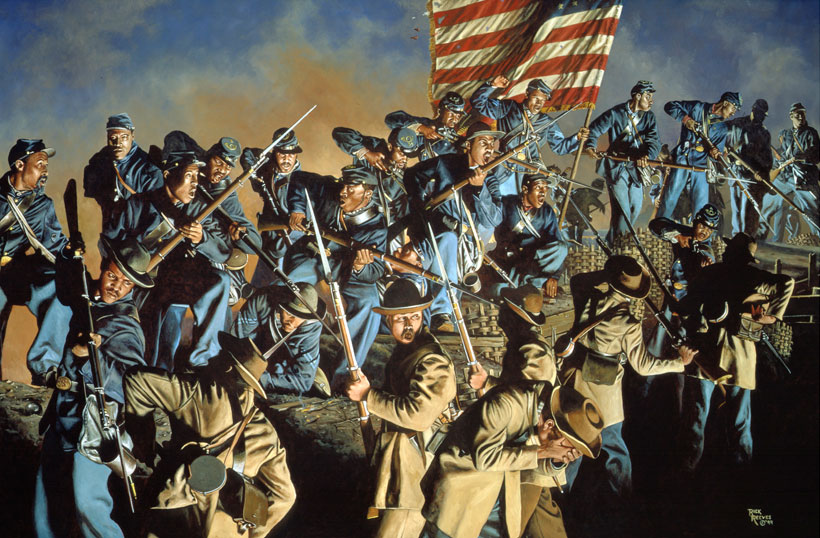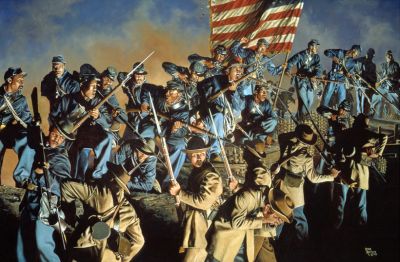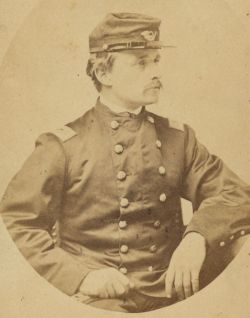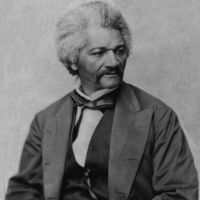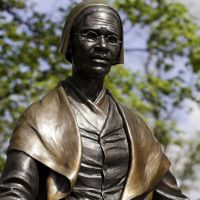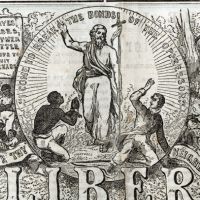Primary Source
From James Henry Gooding, Corporal in the Mass 54th, to President Abraham Lincoln
Morris Island [S.C.]. Sept 28th 1863
Your Excelency will pardon the presumtion of an humble individual like myself, in addressing you. but the earnest Solicitation of my Comrades in Arms, besides the genuine interest felt by myself in the matter is my excuse, for placing before the Executive head of the Nation our Common Grievance:
On the 6th of the last Month, the Paymaster of the department, informed us, that if we would decide to receive the sum of $10 (ten dollars) per month, he would come and pay us that sum, but, that, on the sitting of Congress, the Regt would, in his opinion, be allowed the other 3 (three.) He did not give us any guarantee that this would be…
Now the main question is. Are we Soldiers, or are we LABOURERS. We are fully armed, and equipped, have done all the various Duties, pertaining to a Soldiers life, have conducted ourselves, to the complete satisfaction of General Officers, who, were if any, prejudiced against us, but who now accord us all the encouragement, and honour due us….Mr President. Today, the Anglo Saxon Mother, Wife, or Sister, are not alone, in tears for departed Sons, Husbands, and Brothers. The patient Trusting Decendants of Africs Clime, have dyed the ground with blood, in defense of the Union, and Democracy.
When the war trumpet sounded o'er the land, when men knew not the Friend from the Traitor, the Black man laid his life at the Altar of the Nation, — and he was refused. When the arms of the Union, were beaten, in the first year of the War, And the Executive called more food, for its ravaging maw, again the black man begged, the privelege of Aiding his Country in her need, to be again refused, And now, he is in the War: and how has he conducted himself?… Obedient and patient, and Solid as a wall are they. All we lack, is a paler hue, and a better acquaintance with the Alphabet.
Now Your Excellency, We have done a Soldiers Duty. Why cant we have a Soldiers pay? You caution the Rebel Chieftain, that the United States, knows, no distinction, in her Soldiers: She insists on having all her Soldiers, or whatever, creed or Color, to be treated, according to the usages of War. Now if the United States exacts uniformity of treatment of her Soldiers, from the Insurgents, would it not be well, and consistent, to set the example herself, by paying all her Soldiers alike?… We appeal to You, Sir: as the Executive of the Nation, to have us Justly Dealt with. The Regt, do pray, that they be assured their service will be fairly appreciated, by paying them as american SOLDIERS, not as menial hierlings.
Please give this a moments attention
James Henry Gooding
Quoted in Free at Last: A Documentary History of Slavery, Freedom and the Civil War ed. by Ira Berlin et al. (New Press, 1992)


